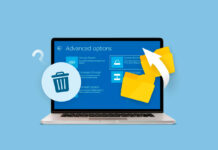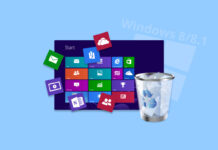 The Reycle Bin is a nifty Windows feature that lets you restore deleted files if you change your mind. But, what do you do when you see the “Recycle Bin on C: is corrupted” error message as soon as you attempt to open the Recycle Bin? Why does this happen, and what can you do about it? We answer these questions in the sections below.
The Reycle Bin is a nifty Windows feature that lets you restore deleted files if you change your mind. But, what do you do when you see the “Recycle Bin on C: is corrupted” error message as soon as you attempt to open the Recycle Bin? Why does this happen, and what can you do about it? We answer these questions in the sections below.
Table of Contents
Why Does My Computer Say that the Recycle Bin is Corrupted?
A corrupt Recycle Bin can have one or more underlying reasons. The message could be caused by an isolated reason that only affects the Recycle Bin, or something more severe that can damage other files on your storage drive too. Typically, you’ll see the following error message: The Recycle Bin on <drive letter> is corrupted. Do you want to empty the Recycle Bin for this drive?
The following table lists the common culprits behind a corrupt Recycle Bin:
| Reason | Description |
| Missing or corrupt DLL files | Dynamic Link Library (DLL) files are crucial for the Recycle Bin, and other Windows applications to work. If one or more of these DLL files are missing or corrupt, the Recycle Bin may become corrupted. |
| Error in the $RECYCLE.BIN system folder | There’s a hidden folder in the C: drive, named $RECYCLE.BIN, that contains references to the Recycle Bin (and its contents) associated with each user account on your PC. Each logical partition on your drive will have its own $RECYCLE.BIN folder. If the contents of the $RECYCLE.BIN folder are modified or deleted, it could result in a corrupted Recycle Bin. |
| An abrupt system shutdown | Abrupt shutdowns are a recipe for disaster. In addition to impacting system apps, they can also affect your personal data. Safe to say, an abrupt shutdown can corrupt the Recycle Bin, especially if it was being written to at the time. |
| Issue with the storage drive | It’s quite possible that the “Recycle Bin is corrupted” error message is a symptom of a logically or physically damaged storage drive. Telltale signs of this include randomly disappearing files, sluggish performance, and grinding, beeping, or clicking noises from the drive. |
| Malware/virus infections | Computer viruses can cause serious damage to your PC, including data loss, an inability to boot, and Recycle Bin corruption. |
| User error | Changes to system settings that require administrative privileges can sometimes cause problems on your PC. A corrupt Recycle Bin can be the result of you having unknowingly tweaked the storage or other system settings. It can also be the result of using bad practices like powering off the PC without shutting it down first, or disconnecting the drive without ejecting it. |
How to Fix a Corrupted Recycle Bin on Windows
To fix a corrupted Recycle Bin, you’ll need to perform one or more of the following–reset the Recycle Bin, run CHKDSK to resolve any logical issues on your drive, use SFC and DISM to fix corrupt system files, or use Bootrec to fix boot issues with the PC. Quite a handful? Fear not, the sections below contain step-by-step instructions on how to execute each fix.
Keep in mind, your PC should be bootable to perform these fixes. If Windows faces any startup issues, it will most likely boot into the Windows Recovery Environment (WinRE). In WinRE, go to Troubleshoot > Advanced options > Command Prompt (CMD) to perform the fixes. If Windows doesn’t boot into WinRE, you’ll need to create Windows Installation Media on another working PC, connect the media to your computer, and choose the Repair your computer option to enter WinRE.
Let’s see how you can “uncorrupt” the Recycle Bin, using the following methods:
Method 1: Manually Reset the Recycle Bin
An easy way to fix Recycle Bin corruption is to simply reset it. This will essentially recreate the Recycle Bin, giving it a fresh start. However, any files that were stored in the Recycle Bin will be deleted (luckily, we have a guide on how to get them back).
You can reset the Recycle Bin using the Command Prompt:
- Type “cmd” in Windows Search (Windows Key + S). Right-click on Command Prompt from the search results and choose Run as Administrator.
- Type
rd /s /q c:\$Recycle.Binin the console, and press Enter.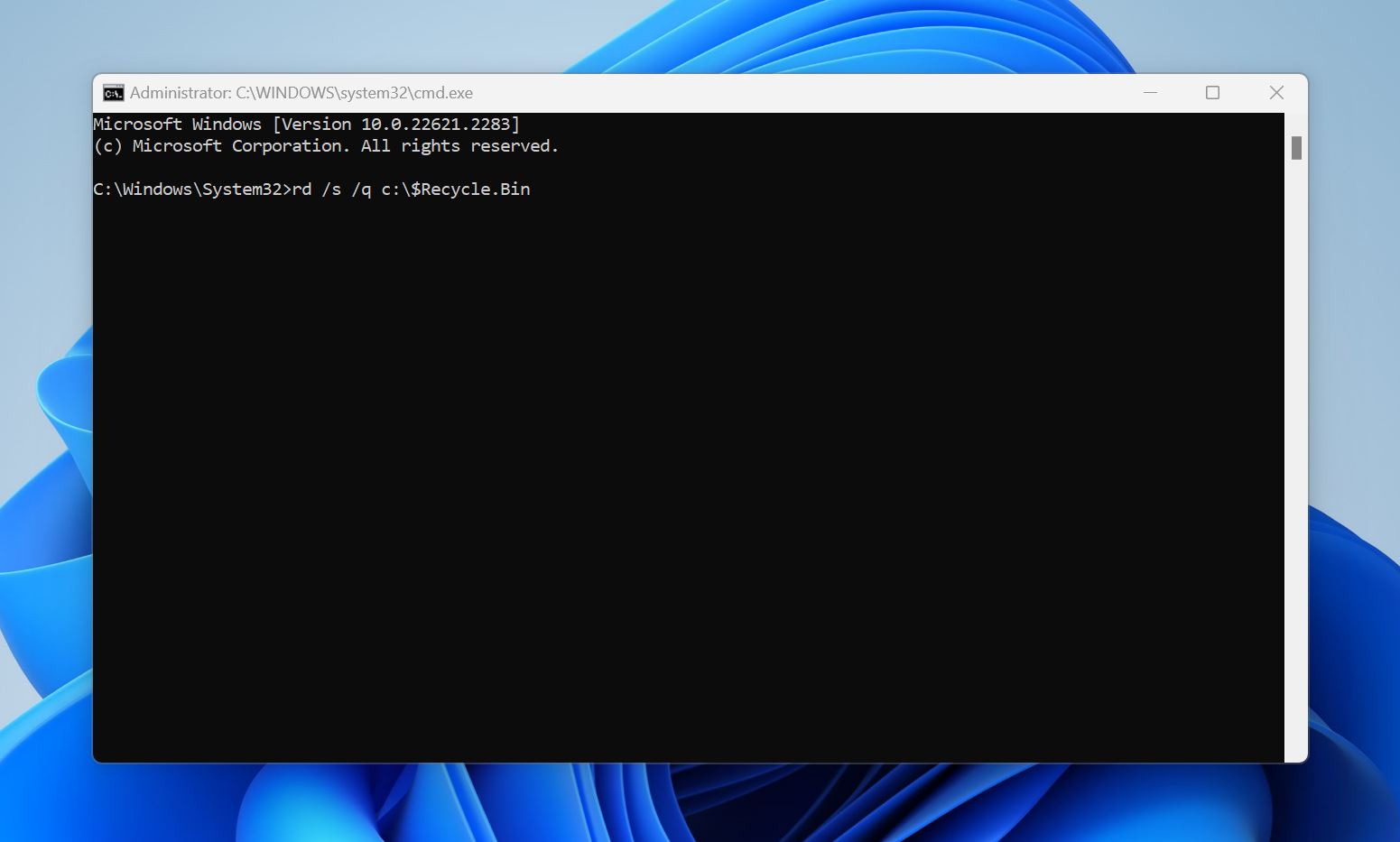
- This will reset the Recycle Bin for all users on the PC, potentially fixing any corruption.
Method 2: Run CHKDSK to Fix Logical Damage on your Drive
The CHKDSK command automatically detects and fixes various logical errors on your drive. It’s a good idea to run this command if you suspect there’s a general problem with your storage drive that’s causing Recycle Bin corruption. However, CHKDSK can delete some of your personal files as it fixes bad sectors on your drive.
Here’s how to run the CHKDSK command:
- Search for “cmd” in Windows Search (Windows Key + S). From the search results, right-click on Command Prompt > Run as Administrator.
- Type
chkdsk C: /r /xand press Enter. If you have multiple partitions, run chkdsk separately for each volume. For example, if you have a D: drive, runCHKDSK D: /r /xand press Enter.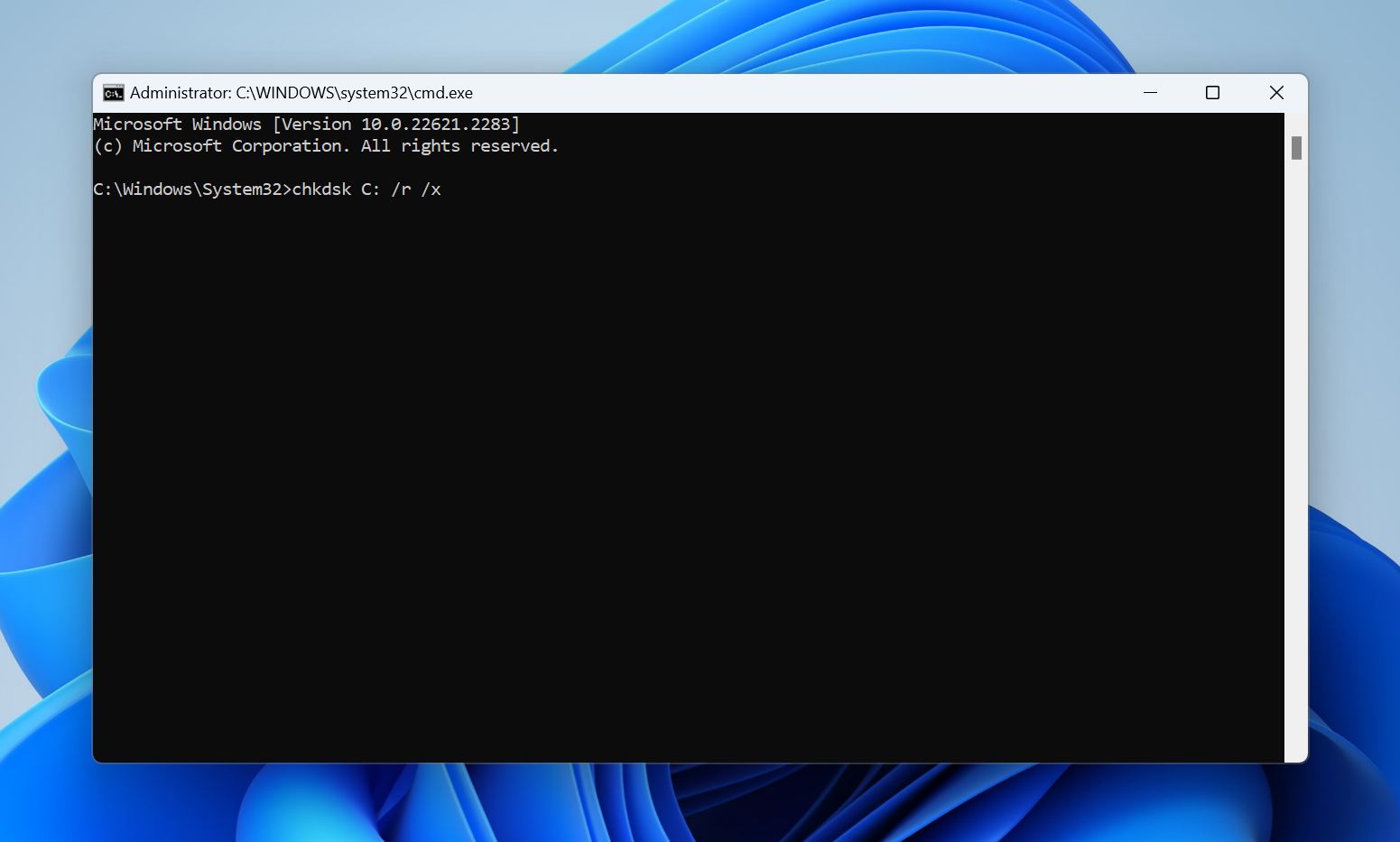
- Wait for CHKDSK to complete. It’s important that you don’t interrupt the scanning process, even if it appears to be stuck.
- Restart your PC after the CHKDSK scans are complete.
Method 3: Run SFC and DISM to Fix Corrupted System Files
System File Checker (SFC) and Deployment Image Servicing and Management (DISM) are command line utilities that repair system files and the Windows system image, respectively. Running these commands ensures that no Windows system files are missing or corrupt, including DLL files.
Here’s how to run DISM and SFC, to potentially repair a corrupted Recycle Bin:
- Run Command Prompt as Administrator.
- Type
DISM /Online /Cleanup-Image /CheckHealthin the console and press Enter. - If you see any errors listed with the Windows image, type
DISM /Online /Cleanup-Image /RestoreHealthand press Enter. If you don’t see any errors listed, simply move on to the next step.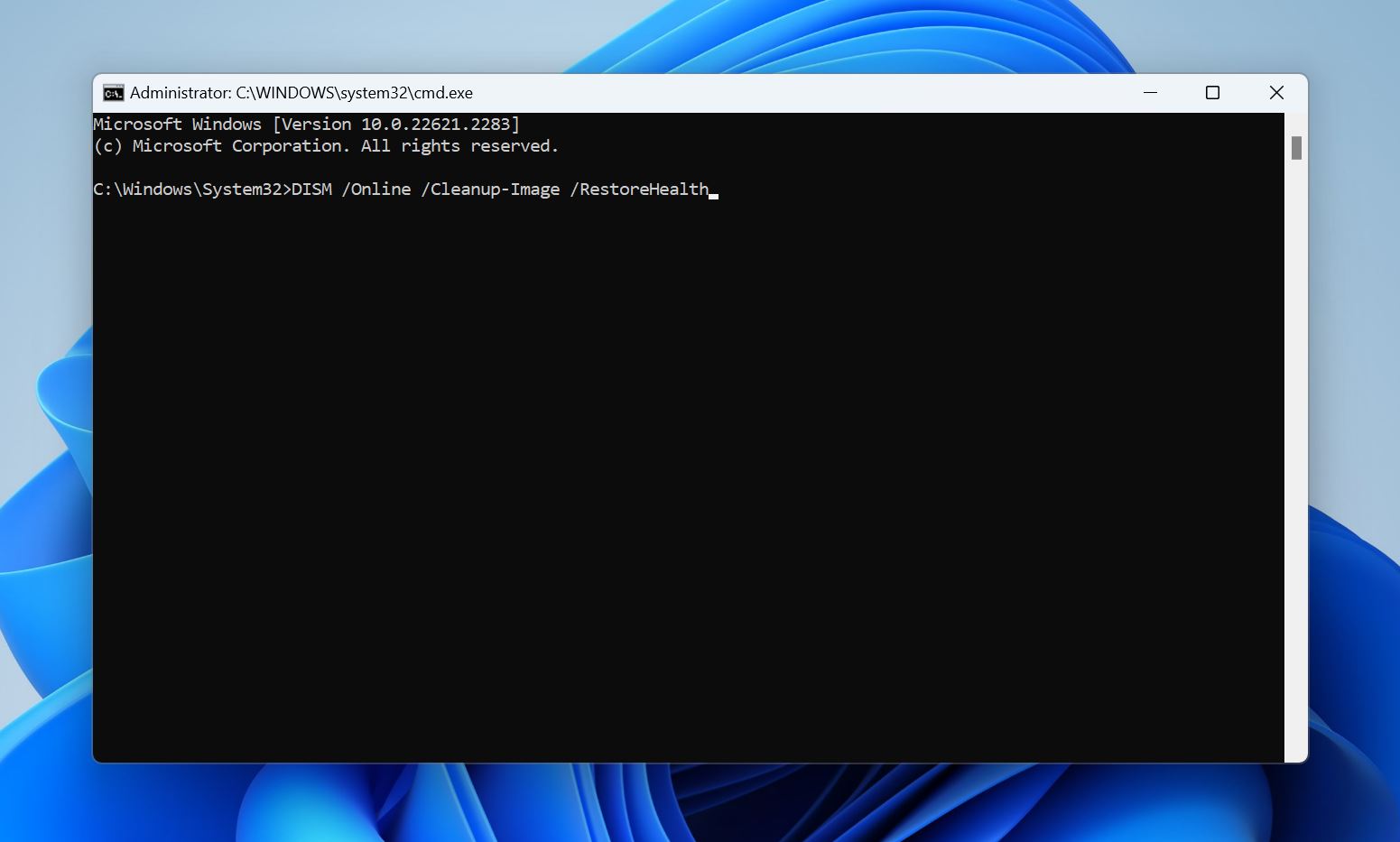
- Type
sfc /scannowand press Enter.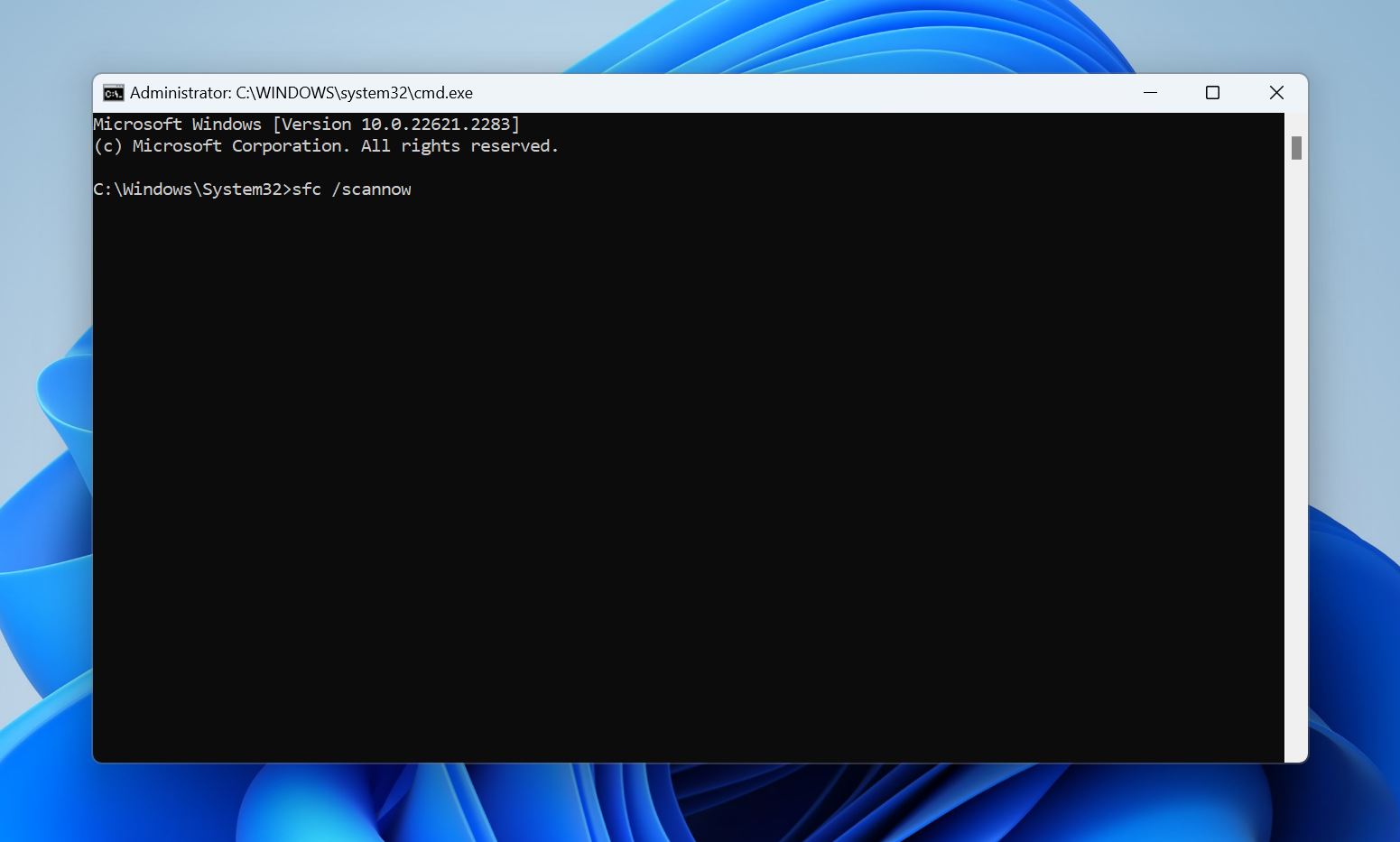
- Wait for SFC to finish scanning and reboot your PC.
Method 4: Use Bootrec to Resolve Any Boot Errors
If Windows isn’t booting, you can use the Bootrec utility to automatically diagnose and fix any boot related errors. However, you need to be in the Windows Recovery Environment (WinRE) to do so.
Here’s how to run Bootrec within Windows Recovery Environment (WinRE):
- Connect the Windows Installation Media to your PC and start the computer.
- You’ll be booted into the Install Windows screen. Here, click Next > Repair your computer.
- Go to Troubleshoot > Advanced options > Command Prompt.
- Type the following commands in succession and press Enter after each one:
bootrec /fixmbrbootrec /fixbootbootrec /scanosbootrec /rebuildbcd
- Reboot your PC.
If Windows is still unable to boot, it’s best to perform an antivirus scan. There are plenty of bootable antivirus solutions that can help you out if Windows refuses to boot. In rare cases, you may need to reinstall Windows.
How to Recover Data Lost after Recycle Bin Corruption
It’s likely that the files located in the Recycle Bin will be deleted as you attempt to fix corruption–resetting the Recycle Bin will remove all files from it, and using CHKDSK also entails data loss. Third-party data recovery tools are a user-friendly and reliable way to recover data from a corrupted Recycle Bin. But, it’s important to choose a program that’s trustworthy and equipped with a good data recovery algorithm.
Disk Drill is a data recovery app that fits the bill when it comes to ease-of-use, data recovery success rate, and compatibility. Additionally, you don’t have to pay a single penny for data recovery, if the files you wish to recover are collectively less than 500 MB in size–thanks to Disk Drill’s free trial for Windows users.
Here’s how to recover data from a corrupted Recycle Bin:
- Download Disk Drill and install it. It’s best to do this on an external storage drive to increase your data recovery chances.
- Open Disk Drill, select the relevant storage drive, and click on Search for lost data.

- Click on Review found items to view all recoverable files. If you wish to only view certain file types (Pictures, Video, Audio, Documents, Archives, and Other), click on the relevant file type tile instead.

- Expand the Deleted or lost and Reconstructed sections to view deleted files that Disk Drill has discovered. The Existing section will contain files that are presently stored on the drive–useful in cases when you’re unable to access the contents of the Recycle Bin using File Explorer.
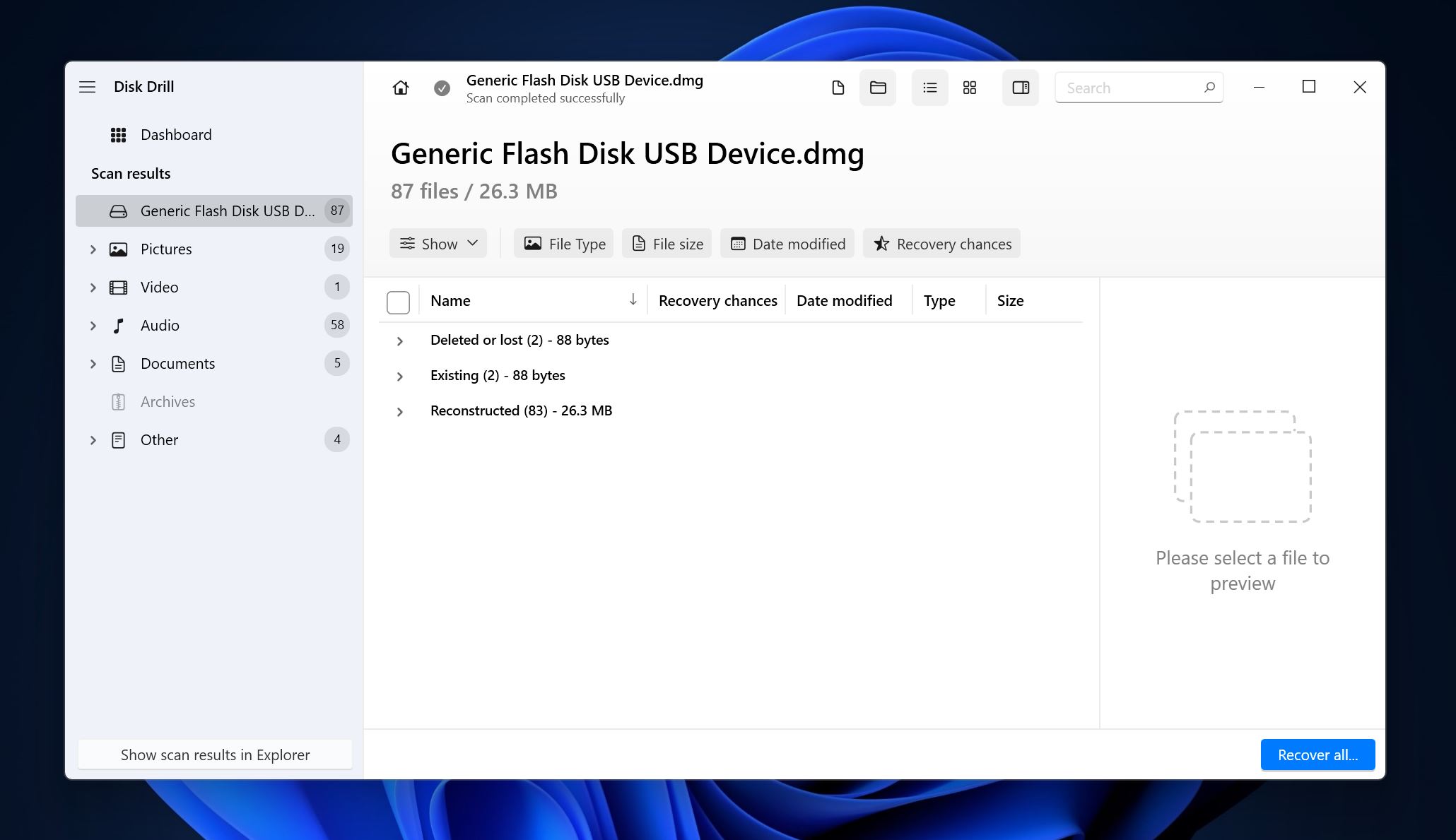
- Select the files you wish to recover. Disk Drill displays a preview of the currently selected file, but you can manually preview any file by clicking the eye icon next to its filename. Once you’ve confirmed the selection, click on Recover.

- Choose a recovery destination for the files and click Next.
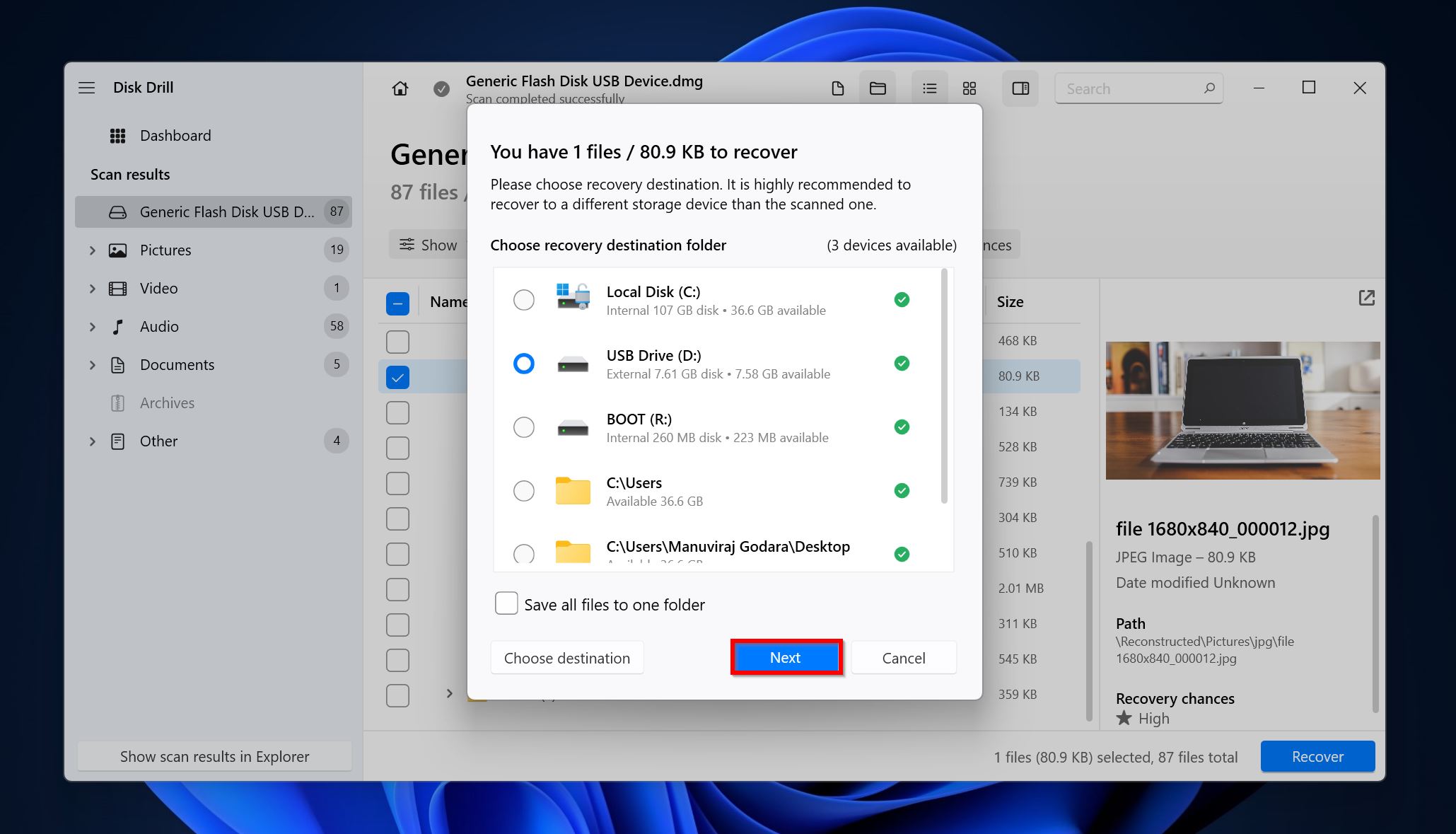
- Disk Drill will recover the selected files.
Conclusion
A corrupt Recycle Bin is usually nothing to fret about and can be fixed with a simple reset. If that doesn’t work, you’ll need to resort to other methods like performing a CHKDSK, DISM, and SFC scan. Rarely, a corrupt Recycle Bin may indicate other issues with your PC, like a malware infection. This may require a Windows reinstallation.
Additionally, fixing a corrupt Recycle Bin may inadvertently cause data loss. However, your data can be recovered using a capable data recovery program.
FAQ
- Click on the Start button and choose Settings.
- Go to Personalization > Themes > Desktop icon settings.
- Tick the Recycle Bin checkbox.
- Open the Windows Security dashboard. You can search for it in Windows Search (Windows Key + S).
- Click on Virus & threat protection.
- Click on Scan options.
- Select Full scan and click on the Scan now button.
- Reset the Recycle Bin.
- Run a CHKDSK scan.
- Run a DISM and SFC scan.
- Format the external hard drive.


